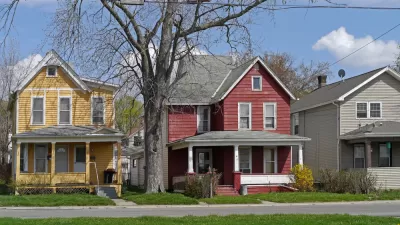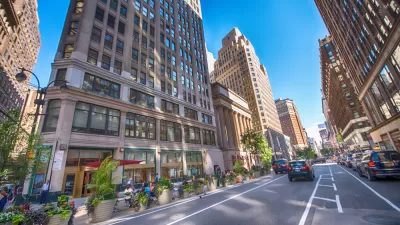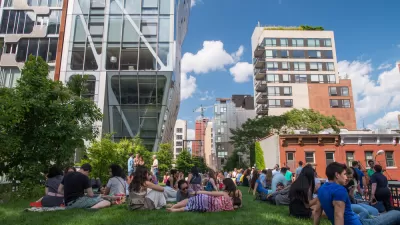In the election's wake, Richard Florida compiles some telling statistics on the nation's threatened middle class. It's on the decline, yes, but it's also becoming more segregated into certain cities, often in the Sunbelt and Rust Belt.

We've all seen the statistics on America's shrinking middle class. But how is that decline dispersed geographically, especially in metro areas? Richard Florida discusses data from Pew covering 2000 through 2014.
For one thing, a process of segregation is taking place, dividing metros and neighborhoods more thoroughly by income. "Nationwide, 172 of 229 metros saw growth in affluent, upper-income households in the past decade and a half; 160 saw an increase in the share of low-income households; and roughly half, 108, experienced both." Also, "[t]he share of American families living in either all-poor or all-affluent neighborhoods more than doubled, increasing from roughly 15 percent to nearly 34 percent."
Florida points out that across the country, cities are seeing their middle classes shrink. "What really stands out is that every single large metro (over one million people) saw its middle class decline. In fact, less than 10 percent of all U.S. metros saw any increase in their middle class whatsoever, with most of these gains being in the range of one percent. The large metros where the middle class is smallest are a combination of superstar cities, tech hubs, resource economies and poorer places. [Among large metros] L.A. has the smallest middle class overall, followed by San Francisco, New York, and San Jose."
From the maps included, it's clear that the metros with the largest middle classes tend to be in places that favored Donald Trump this year. "Simply put, a big part of our national economic dilemma is this: the middle class is larger in declining places and smaller in growing ones. This is especially troubling as a large middle class remains a bulwark against rising economic inequality."
FULL STORY: The Geography of Middle Class Decline

Alabama: Trump Terminates Settlements for Black Communities Harmed By Raw Sewage
Trump deemed the landmark civil rights agreement “illegal DEI and environmental justice policy.”

Study: Maui’s Plan to Convert Vacation Rentals to Long-Term Housing Could Cause Nearly $1 Billion Economic Loss
The plan would reduce visitor accommodation by 25% resulting in 1,900 jobs lost.

Planetizen Federal Action Tracker
A weekly monitor of how Trump’s orders and actions are impacting planners and planning in America.

Waymo Gets Permission to Map SF’s Market Street
If allowed to operate on the traffic-restricted street, Waymo’s autonomous taxis would have a leg up over ride-hailing competitors — and counter the city’s efforts to grow bike and pedestrian on the thoroughfare.

Parklet Symposium Highlights the Success of Shared Spaces
Parklets got a boost during the Covid-19 pandemic, when the concept was translated to outdoor dining programs that offered restaurants a lifeline during the shutdown.

Federal Homelessness Agency Places Entire Staff on Leave
The U.S. Interagency Council on Homelessness is the only federal agency dedicated to preventing and ending homelessness.
Urban Design for Planners 1: Software Tools
This six-course series explores essential urban design concepts using open source software and equips planners with the tools they need to participate fully in the urban design process.
Planning for Universal Design
Learn the tools for implementing Universal Design in planning regulations.
Caltrans
Smith Gee Studio
Institute for Housing and Urban Development Studies (IHS)
City of Grandview
Harvard GSD Executive Education
Toledo-Lucas County Plan Commissions
Salt Lake City
NYU Wagner Graduate School of Public Service





























